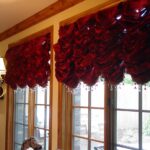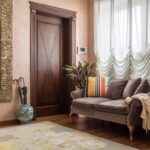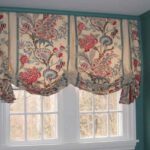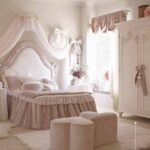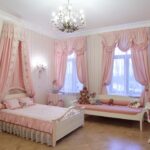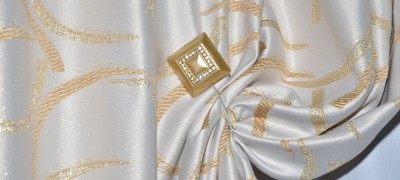Features of Austrian curtains
Curtains play an important part in the process of filling the house. Dozens of varieties and styles of window textiles make the home unique. One of the types of classic curtains is Austrian or Viennese curtains. These are curtains that consist of an even fabric and cross bars. When the curtain is lifted, wavy folds are formed.
Although they were invented several thousand years ago, they do not lose their relevance even today. How to make them yourself, what materials to use, what style to choose - the answers are below in the article.
- Advantages and disadvantages of Austrian curtains
- Selecting the type and color of fabric
- Photo of design ideas in the interior
- Photo ideas for the design of Viennese curtains
- How Austrian curtains are attached
- How to sew an Austrian curtain with your own hands (step by step instructions with a photo)
- Video: how to sew an Austrian curtain yourself
- Photo of Viennese curtains from various materials in different interiors
Advantages and disadvantages of Austrian curtains
The decision to use Austrian curtains in the interior is due to the following advantages:
- Easy to care for. To give the curtains freshness, it is enough to vacuum them with a small nozzle or wipe them with a barely damp cloth.
- Original look.
- More functionality than conventional curtains. Austrian curtains take up very little space, do not fly away from a draft, and they can also effectively regulate the illumination of a room. There is direct access to the windowsill, where you can easily care for the flowers without getting confused in the long tulle.
- Resistant to external factors. Well-chosen textiles for Viennese curtains do not fade in the sun.
- Can be sewn by yourself. Simple cut, minimal fabric consumption allow you to do this work yourself.

Like any piece of furniture, Viennese curtains have not only advantages, but also disadvantages:
- When the curtains are drawn, the window cannot be opened.
- To wash in a washing machine, you need to completely remove the guides, fasteners, and this is a rather laborious process, especially their subsequent installation in place.

A handheld steamer will be a good helper in the process of cleaning Viennese curtains. It will not only give freshness to the fabric, but also remove dust mites, various bacteria.
Selecting the type and color of fabric
The choice of fabrics for sewing Viennese curtains is very large and varied. The main feature that such a fabric should have is the ability to drape.
Satin, guipure or silk curtains will help to create the effect of elegance and sophistication. It is these fabrics that should be used for sewing Austrian women for the living room.
Organza, tulle, linen, veil will make the space cozy. These fabrics are versatile and can be used in the kitchen as well as in living rooms or bedrooms.
Velvet and velor products will well hide the room from excess sunlight. Will look best in the bedroom.
Choose the color of the fabric, the print should be based on the interior of the room. For example, a red velor product is definitely not suitable for a room with loft-style interior solutions. The pattern on such curtains will look best small, monotonous, so as not to spoil the integrity of the picture, with the curtains pulled to the top.
Photo of design ideas in the interior
Austrian curtains are versatile, they can beat any room. You just need to choose the appropriate fabric, style, combination with other decorative elements.
Kitchen
Kitchen - a room where food is constantly being prepared. This leads to some of the features that must be adhered to when sewing curtains for this room. The material should be lightweight and transparent enough to allow sunlight to pass through even with the curtains drawn.
It must also repel droplets of fat, moisture, and not absorb many odors that constantly fill the kitchen. For these purposes, there are special impregnations that protect the fabric from such factors.
For small kitchens, it is best to use curtains in light colors, with a small pattern, made of tulle or organza. Spacious kitchens look good with silk or satin products. They will add freshness and brightness to the space of the product with stripes, large flowers, smooth lines.
If the kitchen window is combined with a balcony door, then a curtain on the side of the door can be added to the Viennese curtains.
Living room
The living room is a visiting card of any home. Usually this is the most spacious, refined, elegant room. Accordingly, the curtains should match her.
For living rooms in the Baroque or Empire style, curtains made of dense, weighty fabrics are suitable. You can add tassels, lace, frills to them.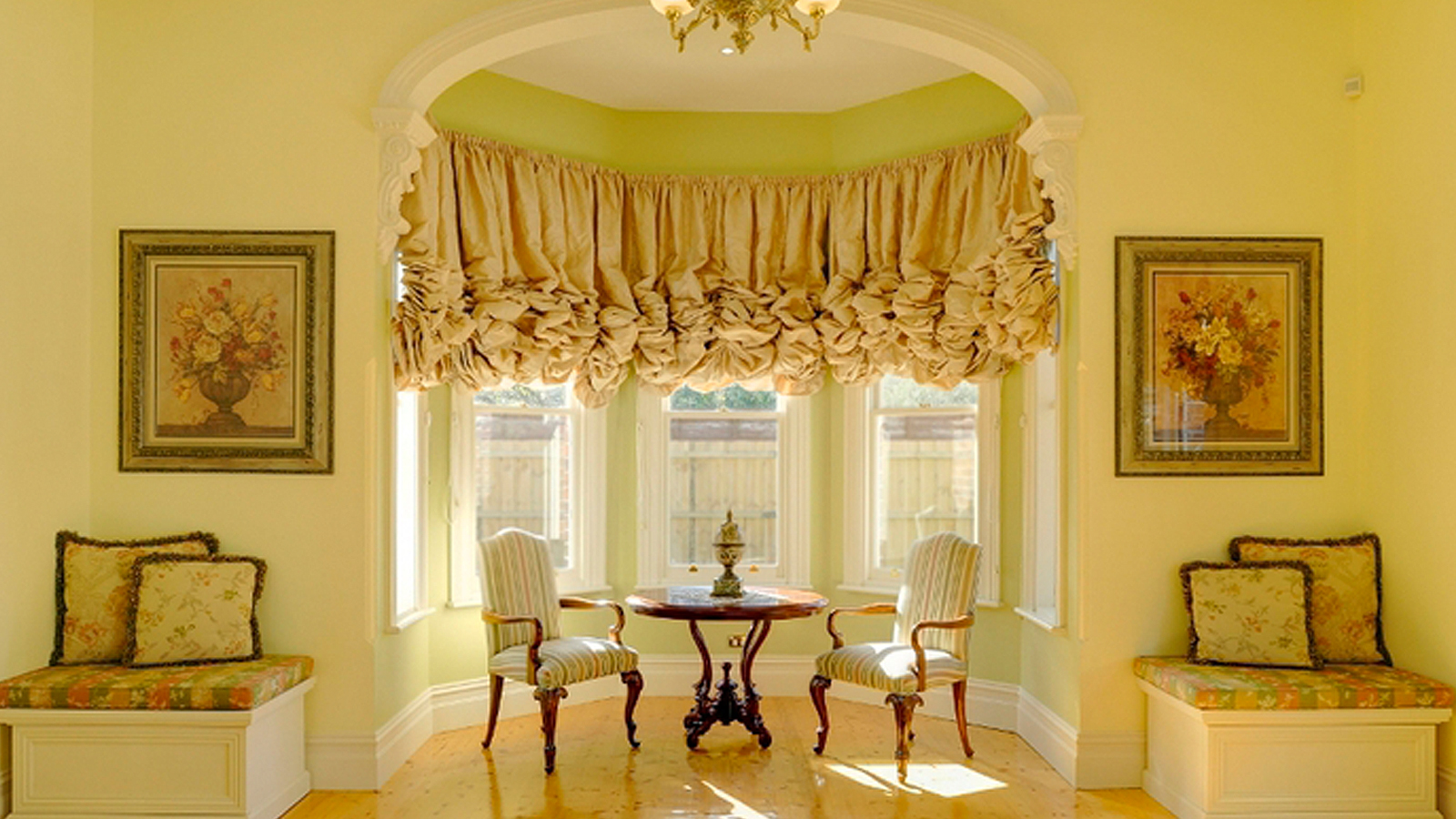
Complementing Provence-style rooms will be curtains made of tulle, voile, or diluted with floral prints.
Country interior will look great with linen products.
Living rooms made in high-tech or modern style can also be decorated with Austrians. It is enough to choose a fabric, for example chintz, poplin and complement them with minimalistic, strict patterns. Do not add lace or tassels here, they will be superfluous elements.
The versatility of Australian curtains also lies in the fact that they can be successfully combined with other curtains and straight curtains.
Lush, rich rooms should not be combined with curtains made from fabrics such as linen, chintz. They will significantly reduce the cost of such premises.
If the windows of the room face the sunny side, it is worth choosing thick fabrics for sewing that well block the direct rays of the sun.
For poorly lit rooms, choose lightweight, translucent fabrics.
Bedroom
The bedroom is the coziest, most comfortable room. It doesn't matter whether it's for women or men, big or small, pompous or minimalist - any can be complemented with Viennese curtains.
An Austrian with soft edges will look good in a married couple's bedroom. Complemented with bows, lace will decorate the room of a girl or an unmarried woman.
To add tenderness and elegance to the bedroom, you should pay attention to beige, milky tones. Sunlight passing through such fabrics becomes soft and warm.
Openwork curtains in the bedroom give the room airiness and weightlessness. Looks good in combination with lambrequins or dense types of curtains.
A creative solution would be to combine fabrics of different textures and densities in one curtain. It is also appropriate to combine curtains in the Viennese style with blinds or lambrequins.
Photo ideas for the design of Viennese curtains
Various patterns and prints can be applied to Viennese curtains.The only exception is photo printing, since they are folded and the drawing is lost.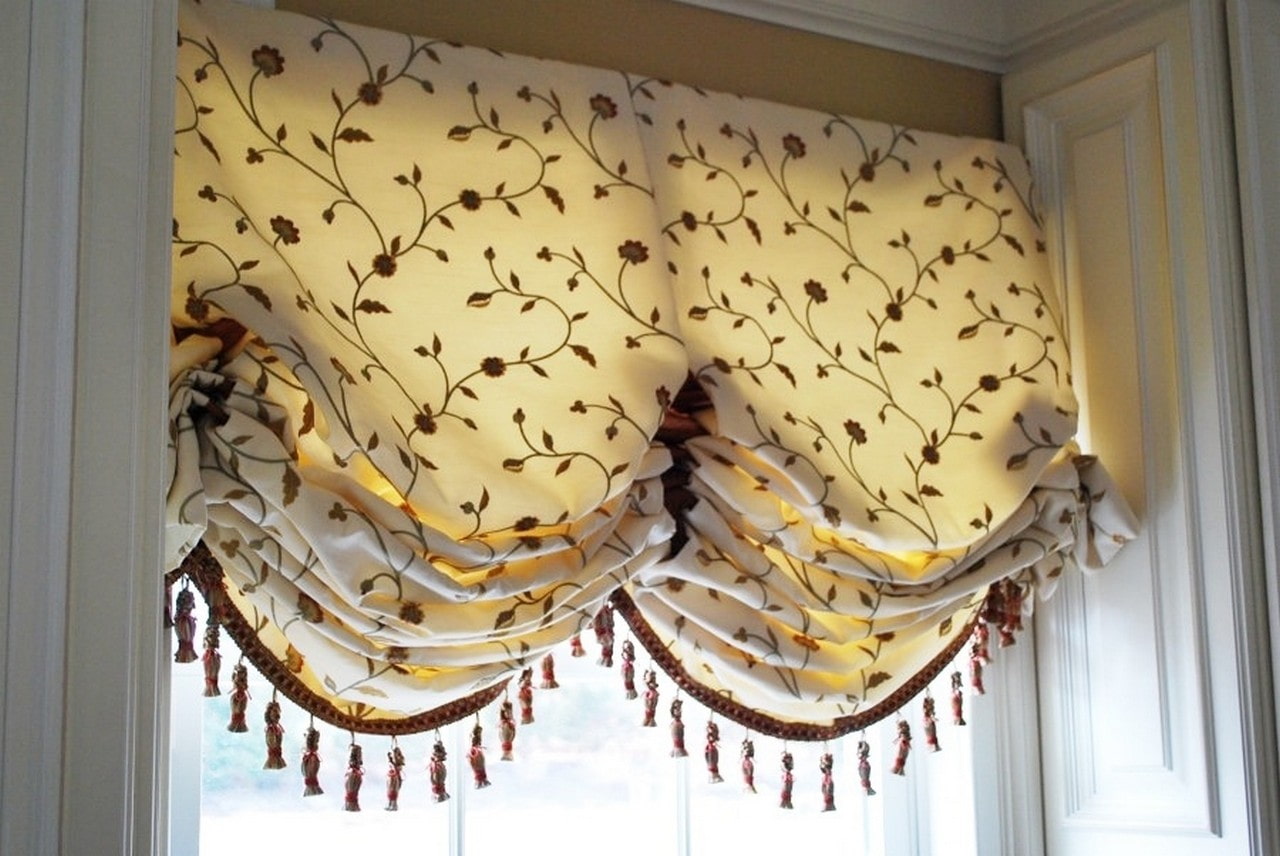
Geometric prints will be appropriate in any room, will become its highlight and addition. These can be stripes, circles, squares, etc.
Single-type, small ornaments do not overload the interior, but at the same time give it coziness and authenticity.
Vegetable patterns are now the most popular. They can be made in the form of leaves or flowers.
How Austrian curtains are attached
Austrian curtains are attached to the cornice or Velcro. A system of cords that runs through the entire curtain helps to set the desired length. Forming semicircular folds at the edge of the curtain, the cords also perform a decorative function.
The Austrian is controlled by a chain mechanism. A modern solution is the installation of an automatic mechanism for raising and lowering the curtain.
How to sew an Austrian curtain with your own hands (step by step instructions with a photo)
You can sew an Austrian woman yourself. This is a great option, because then you can perfectly match the desired interior and window size with a curtain. How to sew Austrian curtains with your own hands, step by step instructions are presented below.
The description of the sewing process can be divided into several stages:
- preparation;
- payment;
- sewing.
At the preparation stage, it is necessary to collect all the necessary equipment for the sewing process. To work, you will need the following elements:
- threads of the desired colors;
- needles;
- a few pins;
- sewing machine;
- iron to create precise fold lines;
- centimeter tape or strip;
- braid for curtains;
- tape for festoons.

The next stage is very responsible and important. Omissions in the measurement process can lead to material damage and inconsistencies in the size of the window and curtain. The rule "measure seven times and cut once" is about this process. But how can this be done?
It is necessary to determine the area of the material for the future curtain. First you need to measure the length: it is enough to determine the distance from the eaves to the extreme point of the curtain, and then add 50% of the resulting value. This is necessary in order for the curtain to be lush.
Don't forget to add 4 cm on each side to finish the edges.
Next, we measure the width. To do this, multiply the width of the cornice by 2. To get the final result, you need to multiply the length by the width. As a result of such simple measurements and calculations, ideally accurate data for the future curtain will be obtained.
The last step is sewing. The step-by-step process can be divided into the following sub-items:
- Marking and patterning of the fabric of the future curtain.
- Side edge processing.
- Sewing on tape for scallops. The optimal distance between them is 30-40 cm.
- Sew on the curtain tape after finishing the top edge.
- To prevent the edges from curling up, you need to iron each machine line.
- You can add uniqueness and sophistication to an Austrian finished curtain using glass beads, lace, fringe or tassels on the lower edge of the curtain.

Summarizing all of the above, we can conclude that independent sewing of Austrian curtains is a fascinating, interesting and completely uncomplicated process. A little imagination and accurate measurements - and the curtain already pleases the owners with its original look.
Video: how to sew an Austrian curtain yourself


